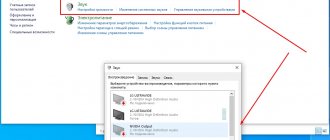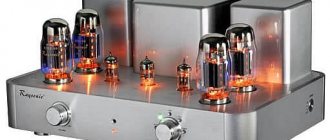Spending a lot of time in the car, many car enthusiasts want their car to be comfortable. One of the elements is the audio system. To increase its sound volume, install a car amplifier. The article examines its design, gives recommendations on how to choose an amplifier for your car, and provides a rating of the best models.
What's wrong with the standard amplifier?
I think it would be wrong to skip this question. There are several reasons to change the standard amplifier.
Firstly, power output. In this case, it is not needed at all for volume, or, strictly speaking, not only for it. In standard systems, very simple amplifiers and speakers with low impedance are most often used. If we are going to build a new system, then it is not at all a fact that the new speakers from the standard amplifier will sound good. They may have, for example, higher impedance, lower sensitivity, and with them we are likely to get God knows what. The exception is acoustics, which were initially positioned by manufacturers for a stock upgrade, but we seem to have set our sights on more serious improvements, and have already left this option behind.
Standard audio systems are mainly made not by car manufacturers themselves, but by third-party companies on order from car manufacturers. But not everyone puts their nameplate on the front panel
Secondly, because the systems are developed to meet fairly stringent requirements - both price and design. If you openly announce that, say, audio components for Honda are made by Pioneer and Alpine, this could damage the reputation of these brands.
Thirdly, equipment. The stock amplifier is designed for one single system option and has zero point tens in terms of additional settings. What if we just need to turn on the high-pass filter in the front or rear channels? What if you need to adjust the low-pass filter in the subwoofer channels in order to connect it with speaker systems? What if there are more serious intentions?
So, it turns out that when upgrading a system, simply replacing acoustics does not always work, and a new amplifier becomes a must-have.
What amplifier is needed for a 1300 W subwoofer
In order to load such a low-frequency channel, you need a unit with an output of up to 3000 watts. You can select an amplifier for a subwoofer from monoblocks. The older model PioneerGmD9601 is suitable for this. You can also use a two-channel or four-channel ULF with a corresponding output, and connect the low-frequency channel using a bridge circuit. In order to select a subwoofer, amplifier and speakers, it is best to choose products from one manufacturer. To avoid problems during the operation of the sound system, you need to purchase products from well-known brands in specialized stores.
Where to start looking for the right amplifier?
As always, the choice should be made based on needs. In other words, we first design the composition of the system, and from it it becomes clear what the amplifier should be like. The simplest thing is to take a piece of paper and draw where the speakers will be installed.
Decide on the type of acoustics connection - through passive crossovers or channel-by-channel with active band division. Both options have their advantages and disadvantages, but this is a topic for another discussion. For now, I’ll just note that the first option is simpler, and the second has more options for customizing and “mixing” the bands. Depending on the chosen option, we will select amplifiers with the required number of channels and functionality.
The audio system can be quite complex. Active division channel amplification and processors are common for high-end automotive systems
Already at this stage, evaluate what will be the source in the system. If the head unit has regular linear outputs, then there are no problems. If you are dealing with a standard “head”, then you almost always have to look for workarounds. I have already discussed this topic in more detail in the article “Sound in a car: how to make a standard system sound better”; now I will only note what concerns connecting amplifiers.
So, there are several options. The simplest one is to connect directly to the outputs of a standard amplifier. To do this, the new amplifier must have high-level inputs in addition to regular inputs. If they are not available, then you can use so-called “high-level to linear converters.”
High-level inputs are included in many car amplifier models
This option is simple, but not always applicable. Most often, a standard amplifier produces, at best, a corrected signal, and at worst, you have to deal with multi-band amplification altogether. In this case, you can “collect” the original signal only with a specialized processor, and only then connect an amplifier to it. This also includes options for standard systems with a MOST bus, from which an SPDIF or analog signal can be “pulled” with a special adapter.
As such complex systems become more and more common, it is not at all surprising that amplifiers with an already built-in processor have begun to appear on the market. But about the equipment a little further.
How much does an amplifier cost for a car?
The most popular amplifiers are in the price range from $50 to $600 . This rating includes representatives of all price segments. Among the Chinese nameless crafts, you can find cheaper options, but they are usually not worth attention (either unreliable or do not provide high-quality sound).
It’s worth remembering right away that a high-quality amplifier cannot be particularly cheap. But not all expensive models provide really excellent sound. In this area, such disproportionality is clearly visible.
Budget models range from $50 to $100. There are proven models in this segment. Basically, at these prices it makes sense to look at monoblocks for a subwoofer. But there are also interesting multi-channel models. Best of all, class AB. Cheap multi-channel Class D amplifiers are very suspicious devices.
From $100 to $200-250 you can choose an average quality model of any type and class. Most music lovers buy just such amplifiers in their cars.
Models can be called expensive, with prices in the region of $400-600 . Although options for $250-400 cannot be called cheap.











